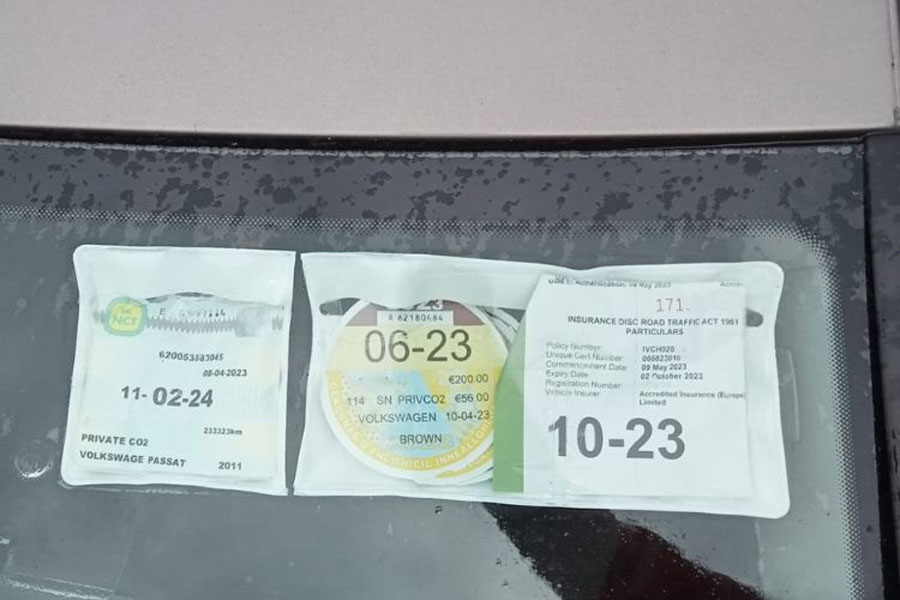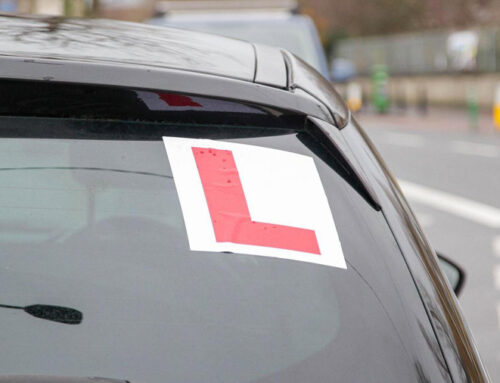Essential Steps on How to Pass Your Driving Test in Ireland
To pass your driving test in Ireland, it’s all about preparation and knowing what to expect. This article provides a step-by-step guide on essential preparations like EDT, test route practice, vehicle checks, and more to help you confidently secure your Irish driving license. Learn “how to your pass driving test in Ireland” with our comprehensive guide.
Key Takeaways
- Completing Essential Driver Training (EDT) lessons, which cost between €500 and €650, is a core requirement for safe driving skills necessary to passing the driving test in Ireland.
- Preparing for the driving test includes studying the Rules of the Road, taking pre-test lessons and mock tests, maintaining a roadworthy vehicle, and knowing your test route using resources like the Test Routes App.
- To successfully pass the driving test, it’s important to maintain calmness and confidence, ensure your vehicle and documentation meet all requirements, follow proper road etiquette, and be adaptable to different weather conditions.
Completing Your Driving Lessons

A fundamental step in passing your driving test in Ireland entails finishing your Essential Driver Training (EDT) lessons. These lessons are meticulously crafted to encompass all the essential skills and knowledge required for safe driving, such as:
- car controls
- positioning
- changing direction
- progression management
Each lesson typically lasts for about an hour, providing enough time to grasp the important concepts and apply them practically.
However, these lessons do come with a cost. While the price of driving lessons in Ireland typically ranges from €500 to €650 for a package of 12 EDT lessons, IN Gear Driving School offer a range of competitive packages.
It’s also significant to select the appropriate driving school. IN Gear Driving School is a reputable driving schools that offer comprehensive EDT lessons throughout Leinster.
Pre-Test Preparation
The old adage, ‘Failing to prepare is preparing to fail,’ rings particularly true regarding the driving test. Studying the Rules of the Road is essential due to the fact that a comprehensive understanding of these rules is crucial for successfully passing both the driver theory test and the practical driving test.
Before preparing for a driving test, it is advisable to engage in preliminary assessments such as taking pre-test lessons that provide guidance from an Approved Driving Instructor (ADI) and undergoing mock tests to assess driving skills, identify knowledge gaps, or pinpoint any bad habits.
- It is just as vital to maintain your vehicle in a roadworthy state. Make sure your vehicle:
- is equipped with valid L-plates both at the front and rear
- possesses valid insurance and motor tax discs
- has a valid NCT disc if necessary
- has properly inflated tyres.
Know Your Test Route
Familiarity with your test route can significantly aid your passing chances. The route for your Irish driving test can be determined by utilizing the Test Routes App or the Driving Test Route Maps available on drivingtestroutes.ie. Being familiar with your driving test route in advance provides the opportunity to:
- Practice and prepare
- Reduce stress and anxiety
- Become acquainted with the roads and potential challenges
- Enhance confidence during the test, especially when facing various road and traffic conditions
Once you are familiar with your test route, it is advisable to practice driving on it using the Test Routes App, which provides interactive maps and GPS directions. Moreover, it is suggested to engage in practice driving in varied scenarios, including nighttime driving, to adequately prepare for any conditions on the practical test day.
Be prepared to encounter common driving challenges on standard test routes near the driving test centre. These may encompass:
- driving on busy and congested roads
- navigating roundabouts
- dealing with traffic signs and signals
- following directions during independent driving.
Staying Calm and Confident
Feeling nervous on the test day is normal, but maintaining calmness and confidence is instrumental in passing your driving test. You can develop confidence for a driving test by following these driving test tips:
- Engaging in positive self-talk
- Participating in tasks and exercises to alleviate nerves
- Maintaining composure and concentration
- Confronting and practicing challenging manoeuvres until you feel self-assured behind the wheel
- These strategies can contribute to a greater sense of control.
Deep breathing is another effective strategy to maintain calmness during the driving test. Deep breathing holds significant importance during a driving test as it:
- Triggers the body’s relaxation response, facilitating relaxation
- Reduces the heart rate
- Decreases blood pressure
- Relaxes muscles
This action aids in helping individuals to remain composed and focused under pressure.
Lastly, mental preparation plays a significant role in a driving test. It is necessary to have your valid learner permit and a roadworthy vehicle with valid car insurance, motor tax discs, and NCT disc if applicable.
Vehicle and Document Check
Prior to embarking on your driving test, confirm that your vehicle complies with all requirements established by the Road Safety Authority and have all essential documents on hand. This will not only show your commitment to the test but also save you from any unforeseen issues that might hinder your test.
It is crucial to have car registration and insurance during the driving test as you will be required to demonstrate that your vehicle is roadworthy and adequately insured. Additionally, you will be assessed on your ability to operate vehicle controls effectively and safely.
Pay special attention to your tyres. Inspect all tyres for potential defects such as:
- sidewall tears
- exposed plies
- penetration damage
- bulges
This will help you avoid disqualifications related to the vehicle. Having all these checks done will give you confidence and peace of mind on your test day.
Proper Road Etiquette
A facet of the driving test that learners frequently underestimate is the significance of adhering to proper road etiquette. This encompasses:
- wearing seat belts
- refraining from driving under the influence
- allowing sufficient space for other road users
- executing lane changes and merges safely
- exercising caution in parking lots
Observing these behaviors and following road signs is of great significance for road safety as it minimizes the likelihood of accidents and fosters a safer environment for all individuals using the road.
In favorable weather conditions, it is advisable to maintain a minimum distance of two seconds behind the preceding vehicle. In adverse weather conditions, the safe distance should be extended to four seconds. This can be measured by selecting a stationary point, such as a lamp post or road sign, and ensuring that you pass it at least two or four seconds after the vehicle in front of you, respectively.
Being able to anticipate the movements of other drivers is another key skill that is assessed during the test. This can be achieved by observing turn signals, monitoring lane changes, creating space for vehicles at slip roads, checking mirrors and blind spots, and interpreting body language and eye contact.
Additionally, defensive driving techniques, such as interpreting cues like eye contact, hand signals, vehicle positioning, head movements, and changes in speed, can also assist in predicting the intentions of other motorists.
Roundabouts and Junctions
For beginner drivers, negotiating roundabouts and junctions can pose a challenge. However, with proper understanding and practice, you can master this skill. The recommended approach for safely navigating roundabouts is to:
- Approach the roundabout from the 6 o’clock position
- Enter by turning left to go around in a clockwise direction
- Give way to traffic coming from your right who are already on the roundabout
However, beware of typical errors that drivers tend to commit at roundabouts, such as entering without yielding to oncoming traffic, exiting to the right or going full circle, and taking the wrong exit or lane.
When it comes to junctions, thorough observation, approaching at the correct speed, and looking for information that will aid in navigating the junction, such as the type of junction and the amount of traffic, are key.
Also, at junctions, the flow of traffic is automatically controlled by traffic lights. Drivers are expected to turn on their headlights, position themselves at the center of the junction, and proceed through the junction efficiently to minimize delays.
Additionally, they should arrive early, carefully observe their surroundings, and ensure that other traffic has come to a stop before proceeding.
Avoiding Common Mistakes
To enhance your likelihood of passing the driving test, you should avoid typical errors. One such mistake is coasting on the clutch. To avoid this, you should:
- Plan your maneuvers ahead of time
- Reduce speed adequately before applying the clutch
- Utilize the brake and clutch properly when stopping
- Remember to change to first gear only once you’ve come to a complete stop
Resting your hand on the gear stick is another common mistake. While it may seem harmless, it can cause unnecessary strain and potential damage to the transmission over time.
Lastly, the position of your hands on the steering wheel is crucial. Not adhering to the 10-to-2 position can elevate the likelihood of risks during airbag deployment, as it may impact the interaction between the airbag and the driver’s hands and arms.
Weather Conditions and Adaptability
An adept driver possesses the ability to adjust to diverse weather conditions and alter their driving style as needed. In Ireland, you should anticipate facing the following weather conditions, each presenting unique challenges:
- Rain
- Fog
- Ice
- Snow
- Dazzling sun
- High winds
These conditions can result in reduced visibility or road grip, so it’s important to be prepared and adapt your driving accordingly.
During such conditions, optimize vehicle control by ensuring the use of suitable tires and employing driver aids such as ABS. Additionally, maintain smoothness in steering, braking, and acceleration.
Moreover, modifying your speed is of utmost importance as inclement weather can significantly diminish tire grip and visibility, thereby elevating the potential for accidents. Also, utilizing dipped headlights during daylight hours can enhance your visibility to other drivers in inclement weather such as rain or fog.
When driving in unlit areas at night, it is advisable to use full beams, but it is essential to switch to dipped lights when encountering other drivers to prevent causing glare.
Post-Test Reflection
Once your test is over, allocate some time to ponder over your performance. Use this as an opportunity to learn from your mistakes and identify areas where you need to improve. Effective strategies encompass the utilization of reflective templates to evaluate previous work, identification of common errors, and employing self-reflection and error analysis to ascertain weaknesses.
And remember, it’s perfectly normal to not pass on the first attempt. On average, 62.5% of motorists pass on their first attempt, indicating that a substantial number of people need multiple tries. So, don’t be disheartened if you didn’t pass this time. Use this experience as a stepping stone towards becoming a better driver.
Summary
In conclusion, passing the driving test in Ireland is a milestone that requires preparation, practice, and perseverance. From completing your driving lessons to pre-test preparations, from staying calm and confident to vehicle and document checks, each step is significant in your journey towards becoming a fully licensed driver.
Remember, it’s not just about passing the test, but about becoming a safe and responsible driver. So, continue to learn, practice, and improve. You are on the right track, and soon enough, you’ll be holding that full driving licence in your hands.
Frequently Asked Questions
Is it easy to pass your driving test in Ireland?
Passing the driving test in Ireland for the first time may not be easy, but with thorough preparation and confidence, it is possible to clear the test on the first attempt.
How many mistakes are allowed on driving test Ireland?
You are allowed to make mistakes, but if you get 6 or more grade 2 faults under the same heading, 9 or more grade 2 faults overall, or 1 or more grade 3 faults, it will cause you to fail the driving test in Ireland.
What are instant fails in Irish driving test?
Instant fails in an Irish driving test include failing to check mirrors, steering erratically, ignoring traffic lights, and speeding or going too slow. It’s important to adhere to speed limits and maintain proper control of the vehicle.
What percentage of people fail their driving test first time in Ireland?
Almost 45% of people fail their driving test on the first attempt in Ireland.
What are the key steps towards passing your driving test in Ireland?
To pass your driving test in Ireland, complete Essential Driver Training, study the Rules of the Road, familiarize with the test route, stay calm and confident on the test day, ensure your vehicle meets requirements, and have all necessary documents ready.








